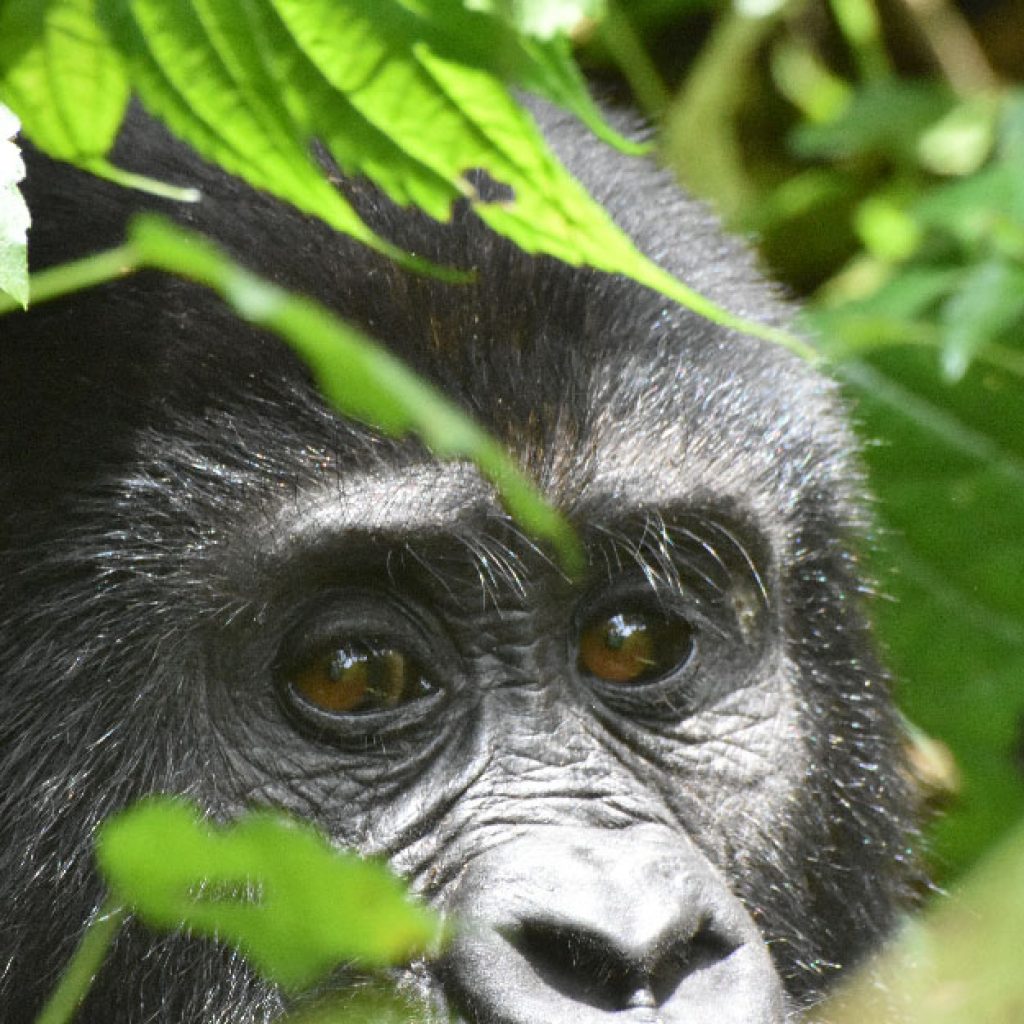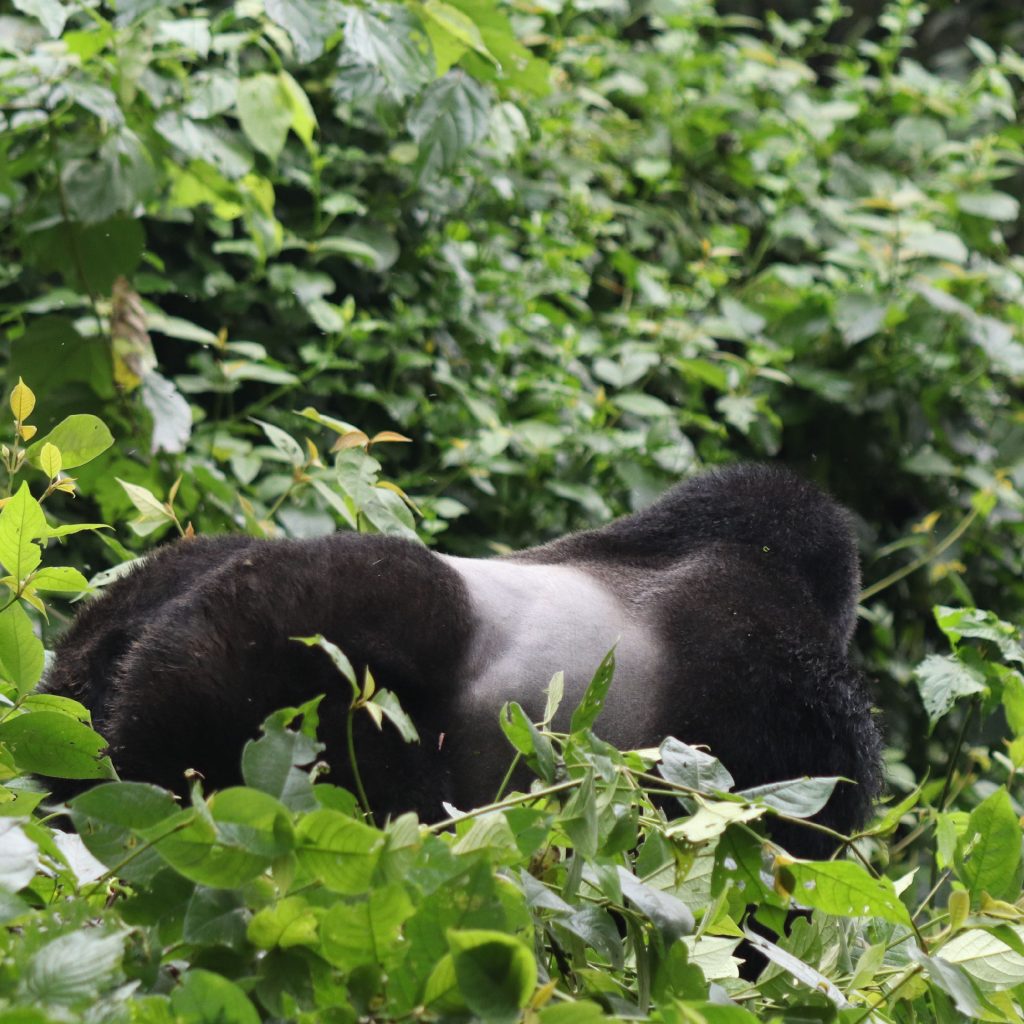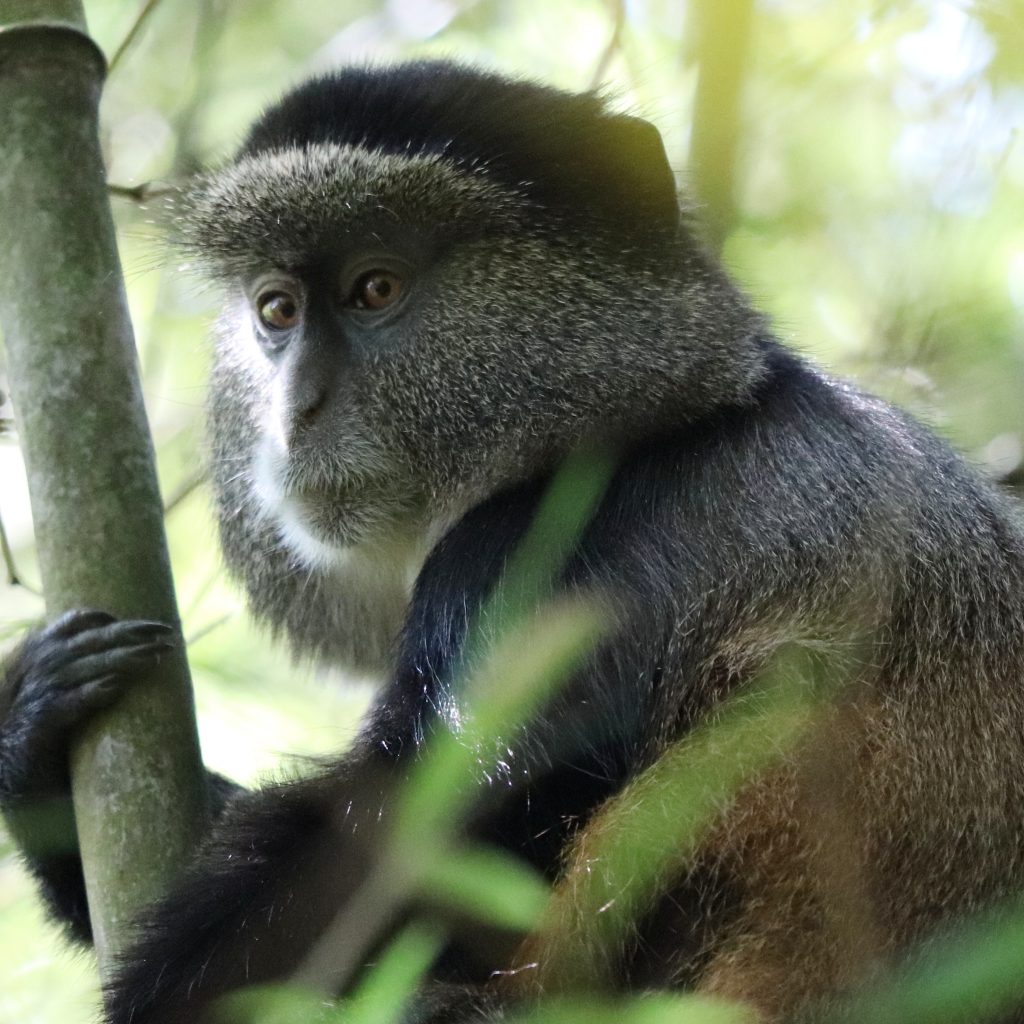Bwindi Impenetrable Forest
Bwindi Impenetrable National Park (BINP)
Located is in southwestern Uganda, Bwindi Impenetrable National Park (BINP) is part of the Bwindi Impenetrable Forest and is situated along the Democratic Republic of the Congo (DRC) border next to the Virunga National Park and on the edge of the Albertine Rift. Composed of 321 square kilometers (124 sq. mi) of both montane and lowland forest, it is accessible only on foot. BINP is a United Nations Educational, Scientific and Cultural Organization-designated World Heritage Site.
Mountain Gorillas
This is HOME
Bwindi Impenetrable National Park is an outdoor paradise for wildlife watchers, photographers, hiking enthusiasts, family vacations, outdoor lovers. This is home to half of the world population of Mountain Gorillas.
Famous For
The forest is home to half of the world's population of endangered mountain gorillas, and is a popular site for gorilla tracking. Although the Impenetrable Forest is named so, a variety of local fauna and flora can be found in the forest. Mammals that are seen in the forest include African elephant, black-and-white colobus monkey, chimpanzee, bushbuck, bushpig, common duiker, L'Hoest's monkey and many others. The mountain gorillas are found through the forest that is divided into four sectors which include Buhoma, Ruhija, Rushaga and Nkuringo.
The park can be accessed by road. It takes approximately 10 hours to drive from Kampala capital city to Bwindi. The drive from Ishasha, in Queen Elizabeth National Park, takes about 2 hours. It is also possible to fly to Kihihi or Kisoro, bringing your journey to about 90 minutes and a short drive of at least 1 hour.
The Bwindi impenetrable national park offers a range of adventurous memorable safari activities and includes gorilla trekking and many others. Mountain gorilla trekking fees for Foreign Non-Residents (FNR) are $700, Foreign residents (FR) $600, and East Africa Community residents (EAC) 250,000 UGX
The general concept of ‘when to visit’ doesn’t necessarily apply to Uganda. Bwindi is open for gorilla trekking all year long, but the best times to go are from June to August and December to February. This is a time when it is a dry weather and the forest trails are drier and therefore less slippery.
The Bwindi Forest is an ancient and dense jungle paradise located in south-western Uganda. It is a steep, misty canopied Afromontane forest that clings to steep mountain slopes and cloaks secret valleys. The forest’s thick vegetation and the protective canopy of rain clouds shield the land from intense sunlight, which keeps temperatures cool and comfortable; even during the peak of a dry season.
The canopy of the forest is composed of ancient emergent trees. With over 163 different tree species, some towering up into the sky, forming the upper storey of this forest like African brown mahogany, Ceiba trees which are one of the tallest tree species in Bwindi forest extending over the canopy. It also includes 120 mammals and 350 documented bird species.
Bwindi Impenetrable National Park is just over 330km² (32,000 hectares). To the north lies Queen Elizabeth National Park (famous for its tree-climbing lions), to the south the Virunga Mountains of Rwanda, and the Democratic Republic of Congo lies along the western edge of the park. As part of East Africa’s Albertine Rift and with altitudes ranging from 1,160 to 2,607 meters, Bwindi’s ancient rainforests have some of the highest levels of biodiversity in Uganda.
Bwindi Impenetrable Forest is one of the best places to see the Mountain Gorillas in their natural habitat. They are considered by many as the most endangered of all primates. Gorillas are gentle apes, but any gorilla will defend itself if it feels threatened. The Bwindi forest is home to an estimated 480 mountain gorillas (more that 50% of world’s population) and are protected by a strict control on visitor permits. The forest is protected as a national park and its preservation was recognized by UNESCO and home to an astonishing variety of animals, birds, plants and insects.
From the misty cloud forests of Ruwenzori to the rolling grasslands of Murchison, Uganda has a long list of bird species to marvel at. If you are a bird-watcher and would love to see some rare endemic species, then Bwindi Impenetrable National Park is your best bet. Delving deep into the forest in search of rare birds is not an easy task. Despite being home to an estimated 350 bird species, many of which are endemic to the Albertine Rift and 14 recorded nowhere else in Uganda. Globally threatened species such as African green broadbill and Shelley’s crimsonwing are also found here.
The four sectors of Bwindi
1. Buhoma (northern Bwindi)
The sector is named after the Buhoma hill is the first section of Bwindi Impenetrable National Park to be opened to visitors. It was also the starting point for gorilla trekking when habituation of the Mubare gorilla group started in 1993. The Mubare gorilla family is the most visited family in Bwindi and was one of the first families to be habituated. Apart from the Mubare family, the Habinyanja and Rushegura groups also call Buhoma home.
2. Ruhija (eastern Bwindi)
Ruhija is less-frequented than Buhoma, and home to the Kyaguriro, Oruzogo, Mukiza and Bitukura gorilla families. Aside from gorilla trekking, avid hikers can aim for the top of Rwamunyonyi Peak (“the hill of many birds”). The Rwamunyonyi Peak is the highest peak in the Bwindi Impenetrable Forest, a natural wonder that recently became an UNESCO World Heritage Site. For those who are willing to trek up its steep slopes, there is a platform at the summit from which you can see Uganda, Rwanda and the Democratic Republic of Congo offering extraordinary views. You can also opt for a trip into the surrounding areas to meet some of the Batwa people, the original inhabitants of the park. You will the use of medicinal plants found in the forest and other ancient survival skills practiced by their people for thousands of years.
3. Rushaga sector (southern Bwindi)
The Rushaga region of Bwindi has multiple habituated gorilla families in the region including the Bushaho, Bweza, Busingye, Mishaya groups and the Nshongi group – the largest of all the gorilla families in Bwindi. The Rushaga sector includes Lake Mutanda, and so visitors can set out on a boat cruise for an entirely different perspective of the spectacular scenery. It is in this sector that Gorilla habituation takes place while spending up to 4 hours with the group, rather than the standard 1 hour. Gorilla habituation is the process of gently introducing wild Mountain Gorillas to the sight and presence of humans for research.
4. Nkuringo (western Bwindi)
The Nkuringo sector is said to be the most scenic area to visit in Bwindi offering spectacular mountain scenery of the park with stunning and break-taking views of the Virunga volcanoes. This particular region is better suited to more physically active visitors because of its steep slopes.
Gorilla Trekking
Once on the verge of extinction, mountain gorilla numbers have been steadily increasing in the last decade, with the most recent estimate putting the number of wild mountain gorillas at over 1,000 individuals. Over 450 of these individuals are found in Bwindi Impenetrable Forest, making it one of the population’s strongholds.
Gorilla trekking is carefully and consistently controlled, to ensure that no harm comes to the gorillas, and every tourist undergoes an induction session before commencing the trek. No more than eight individuals (less for certain gorilla families) are allowed at any one time with a gorilla family group, for a maximum of one hour.
There are two options for coming-face-to-face with these gentle giants: most travellers do the standard gorilla trekking experience, which costs US$600 per person and involves hiking to your assigned habituated group and you will spend an hour observing the gorillas as they play, groom and eat. The second option, which costs US$1500 per person, is the gorilla habituation experience, where you get to spend a total of four hours with a gorilla group that is in the process of being trained to become used to spending time with people.
Primates
Apart from the mountain gorillas that have made the region famous, Bwindi is also home to another nine species of primates. These include black-and-white colobus, Ugandan red colobus, red-tailed and blue monkeys, golden monkeys, grey-cheeked mangabeys, vervets and vulnerable L’Hoest’s monkeys. Bwindi is the only place where mountain gorillas and chimpanzees are found together. Chimpanzees here are not habituated to the presence of humans, so sightings tend to be rare and relatively brief.
Gorilla trekking is carefully and consistently controlled, to ensure that no harm comes to the gorillas, and every tourist undergoes an induction session before commencing the trek. No more than eight individuals (less for certain gorilla families) are allowed at any one time with a gorilla family group, for a maximum of one hour.
You can go gorilla tracking year-round in Bwindi, but most travellers choose to do it in the driest months of the year – June to August and December to February.
You need to book a Gorilla trekking permit, which we will secure for you upon booking. The permit should be arranged five or six months in advance of your visit as there are only a few permits issued each day and they all get booked up during the busiest months of the year (June to August, as well as December to February). Discounted permits are offered during the rainy season months of March to May and September to November for US$450 a person.
Gorilla tracking can be physically demanding – the hike to reach your allocated group can take anything from just an hour to an entire day. It’s essential that you have a good level of fitness, and that you wear the right gear: a comfortable pair of hiking boots with ankle support, a thick pair of socks (for biting ants), long trousers to protect from stinging nettles and a durable waterproof jacket.
You need to be over the age of 15 to go gorilla tracking and the park reserves the right to allow you continue tracking in case you are suspected of being sick. Human illnesses can be transmitted to gorillas and have the potential to kill an entire group. Don’t use flash photography, don’t eat or drink in front of them, keep your voice down, and cover your mouth and nose and turn away from the gorillas if you need to sneeze.


